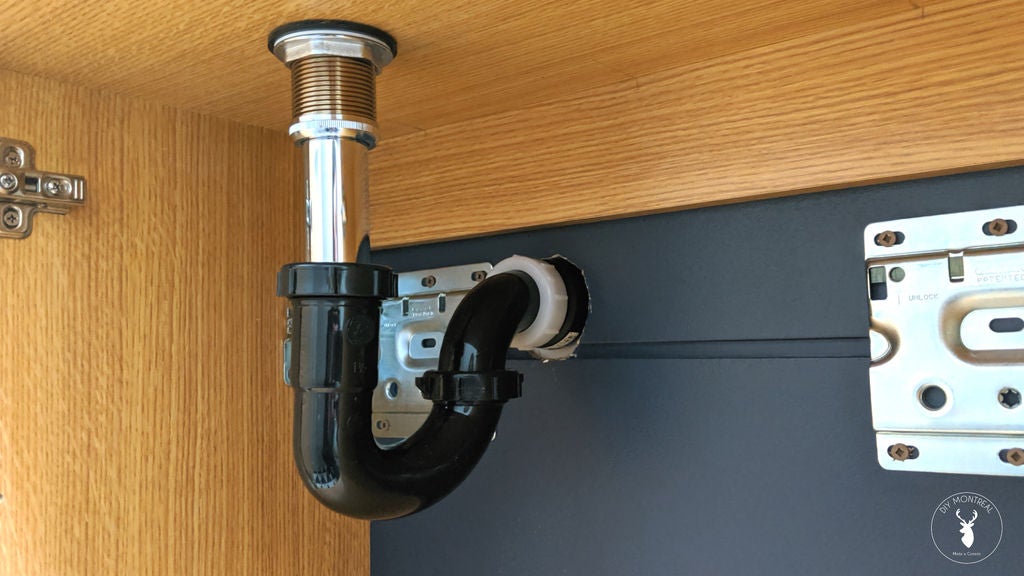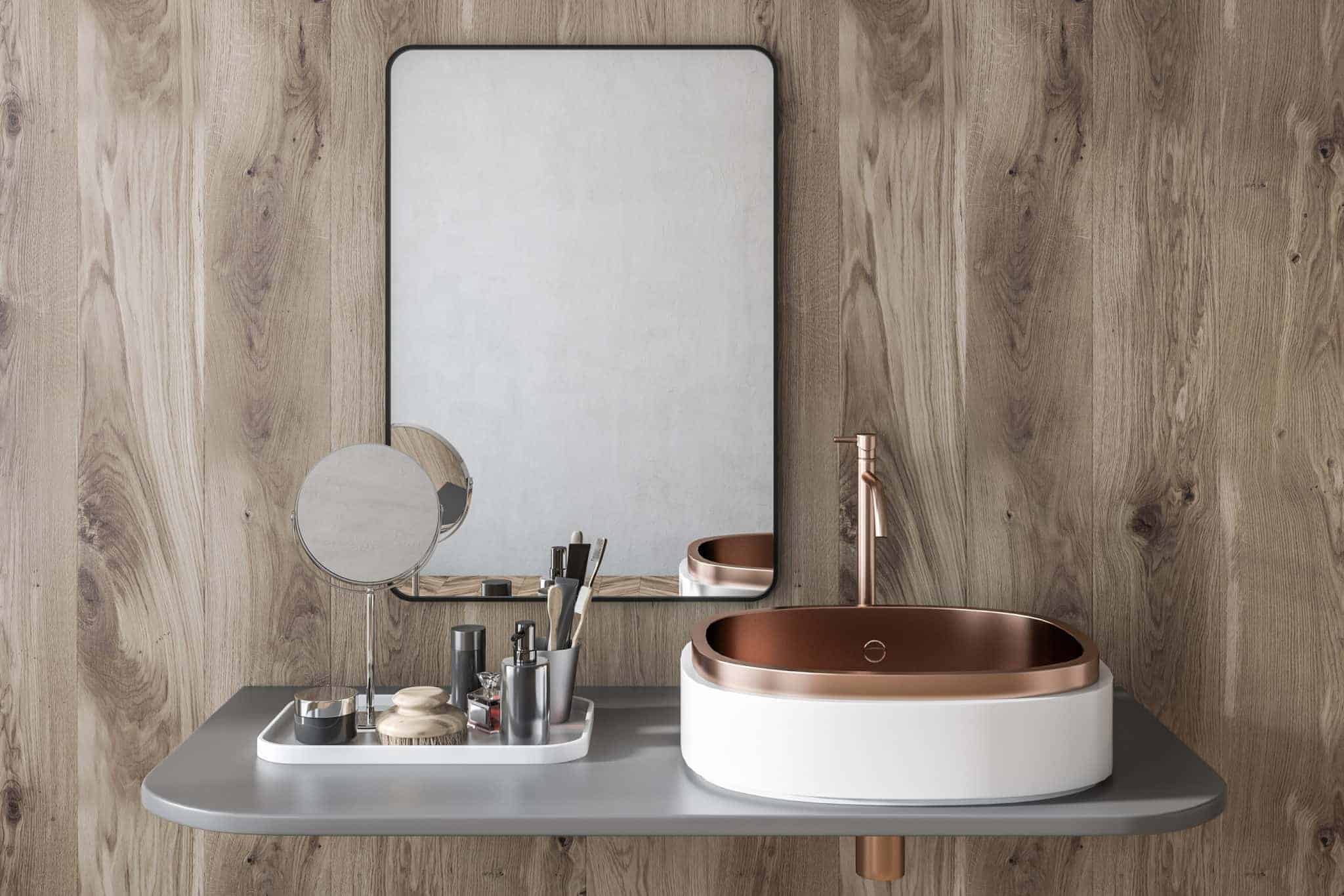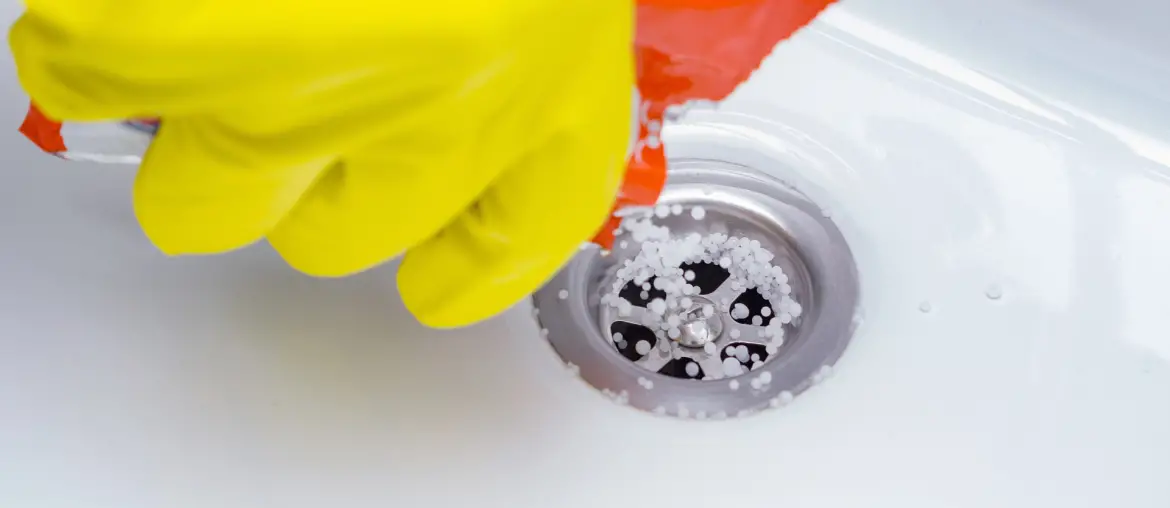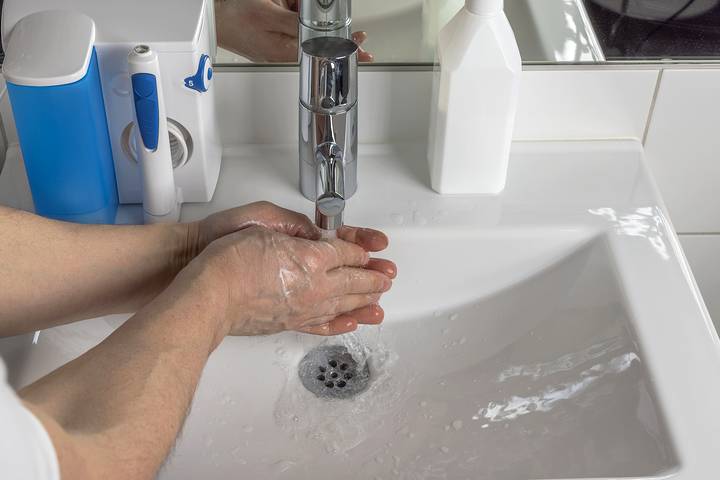If you're embarking on a bathroom renovation or simply replacing an old sink, one crucial step is hooking up the bathroom sink drain. This may seem like a daunting task, but with the right tools and some basic knowledge, you can easily install a new drain yourself. In this guide, we'll take you through the steps of hooking up a bathroom sink drain and provide helpful tips and tricks along the way. Let's get started! Hooking Up Bathroom Sink Drain: A Complete Guide for Beginners
Before you begin, make sure you have all the necessary tools and materials on hand. These may include a sink drain kit, pliers, a wrench, plumber's putty, and silicone caulk. Once you have everything ready, follow these steps: Step 1: Remove the old drain – If you're replacing an old sink, start by disconnecting the old drain. Use pliers to loosen the nut connecting the drain to the sink and remove the drain. Step 2: Prepare the new drain – Your new sink should come with a drain assembly. Take it out of the packaging and remove any excess putty or sealant. Step 3: Apply plumber's putty – Roll a small amount of plumber's putty into a rope and apply it around the rim of the drain opening on the sink. This will create a watertight seal between the sink and the drain. Step 4: Insert the drain – Place the drain into the sink opening and press it firmly to ensure a tight seal. Step 5: Attach the drain nut – Underneath the sink, place the drain nut over the drain pipe and tighten it with pliers. This will secure the drain in place. Step 6: Connect the drain to the sink – Take the flange gasket and place it over the drain pipe, followed by the metal washer and rubber washer. Thread the drain tailpiece through these and secure it with the drain nut. Step 7: Add silicone caulk – To prevent leaks, apply a small amount of clear silicone caulk around the base of the drain. This will create a waterproof seal between the sink and the drain. Step 8: Connect the sink to the trap – The final step is to connect the sink drain to the trap. Use a wrench to tighten the nuts and ensure a secure fit. How to Install a Bathroom Sink Drain: A Step-by-Step Guide
Now that you know the basic steps for installing a bathroom sink drain, here are some additional tips to ensure a successful hookup: Use Teflon tape – Before connecting any pipes, wrap Teflon tape around the threads to create a tight seal and prevent leaks. Don't overtighten – While it's important to secure all connections, be careful not to overtighten the nuts as this can cause damage to the pipes. Clean up excess putty – After installing the drain, wipe away any excess putty or caulk to create a clean and tidy finish. Tips for Properly Hooking Up Bathroom Sink Drain
As with any DIY project, it's important to be aware of common mistakes and avoid them for a successful installation. Here are some mistakes to watch out for when hooking up a bathroom sink drain: Not using enough putty – If you don't use enough plumber's putty, you may end up with leaks. Make sure to apply a sufficient amount around the drain opening for a watertight seal. Forgetting to clean – Before applying any sealants, make sure to clean the sink and drain thoroughly to ensure a secure bond. Mixing up the connections – It's easy to get confused with all the different pipes and connections, so make sure to double-check each step and refer to the instructions if needed. Common Mistakes to Avoid When Hooking Up Bathroom Sink Drain
To make sure you have everything you need for a successful bathroom sink drain hookup, here's a list of the essential tools and materials: Sink drain kit – This should include all the necessary components for the drain assembly. Plumber's putty – This will create a watertight seal between the sink and the drain. Silicone caulk – Use this to create a waterproof seal around the base of the drain. Pliers and a wrench – These will be needed to tighten and secure the various connections. Tools and Materials Needed for Hooking Up Bathroom Sink Drain
Even with proper installation, issues with the bathroom sink drain may still arise. Here are some common problems and how to troubleshoot them: Slow draining – If your sink is draining slowly, this could be due to a clog in the drain or vent pipe. Use a plunger or drain snake to clear any obstructions. Leaks – If you notice leaks around the drain, make sure all connections are tightened and check for any cracks or damage in the pipes. Unpleasant odors – If your sink is emitting unpleasant odors, this could be a sign of a clogged or dirty drain. Use a drain cleaner or a mixture of baking soda and vinegar to eliminate any buildup and odors. Troubleshooting Common Issues with Bathroom Sink Drain Hookup
While it's possible to hook up a bathroom sink drain yourself, some homeowners may prefer to hire a professional plumber. Here are the pros and cons of each option: DIY Pros: Saves money, can be a fun and rewarding DIY project, and gives you a better understanding of your plumbing system. Cons: Requires time and effort, potential for mistakes and issues, and may not be covered by warranty if something goes wrong. Hiring a professional plumber Pros: Experienced and knowledgeable, can save time and effort, and offers a guarantee for their work. Cons: Can be costly, may require scheduling and coordination, and less of a learning experience. Professional vs DIY: Pros and Cons of Hooking Up Bathroom Sink Drain
To keep your bathroom sink drain functioning properly and prevent any issues, it's important to regularly maintain and clean it. Here are some tips for keeping your drain in top condition: Use a drain strainer – Install a strainer in your sink drain to catch any hair, soap scum, or other debris that can cause clogs. Avoid pouring grease or oil down the drain – These substances can solidify and cause buildup in your pipes. Instead, dispose of them in the trash. Regularly clean your drain – Use a mixture of baking soda and vinegar to clean your drain and eliminate any odors. For tougher clogs, use a drain cleaner or a plumber's snake. How to Maintain and Clean Your Bathroom Sink Drain
Hooking up a bathroom sink drain may seem like a daunting task, but with the right tools and some basic knowledge, it can easily be done as a DIY project. However, if you're not confident in your abilities or simply prefer to leave it to the professionals, hiring a plumber is always an option. Just remember to regularly maintain and clean your drain to prevent any issues in the future. Happy plumbing! In Conclusion
The Importance of Properly Hooking Up Your Bathroom Sink Drain

Why is it Important?
 When designing or renovating your house, it's easy to overlook smaller details like properly hooking up your bathroom sink drain. However, this seemingly insignificant task plays a crucial role in the overall functionality and aesthetic of your bathroom. A poorly installed drain can lead to leaks, clogs, and unpleasant odors, causing frustration and potentially costly repairs down the line. Therefore, it's important to invest time and effort into ensuring that your bathroom sink drain is correctly hooked up.
When designing or renovating your house, it's easy to overlook smaller details like properly hooking up your bathroom sink drain. However, this seemingly insignificant task plays a crucial role in the overall functionality and aesthetic of your bathroom. A poorly installed drain can lead to leaks, clogs, and unpleasant odors, causing frustration and potentially costly repairs down the line. Therefore, it's important to invest time and effort into ensuring that your bathroom sink drain is correctly hooked up.
Ensuring a Smooth Flow of Water
 One of the main purposes of a sink drain is to allow water to flow freely, carrying away any debris or waste. When the drain is not properly hooked up, this can impede the flow of water and cause it to back up or drain slowly. This not only creates a nuisance but can also lead to standing water, which is a breeding ground for bacteria and can cause unpleasant smells. By properly hooking up your bathroom sink drain, you can ensure a smooth and efficient flow of water, reducing the chances of clogs and backups.
One of the main purposes of a sink drain is to allow water to flow freely, carrying away any debris or waste. When the drain is not properly hooked up, this can impede the flow of water and cause it to back up or drain slowly. This not only creates a nuisance but can also lead to standing water, which is a breeding ground for bacteria and can cause unpleasant smells. By properly hooking up your bathroom sink drain, you can ensure a smooth and efficient flow of water, reducing the chances of clogs and backups.
Preventing Leaks and Water Damage
 Another crucial reason to pay attention to the installation of your sink drain is to prevent leaks and water damage. If the drain is not properly connected to the sink or the main plumbing system, it can cause water to seep through and damage your bathroom's structure and surrounding areas. This can lead to costly repairs and even pose a safety hazard. By making sure that your sink drain is hooked up correctly, you can avoid these issues and maintain the integrity of your bathroom.
Another crucial reason to pay attention to the installation of your sink drain is to prevent leaks and water damage. If the drain is not properly connected to the sink or the main plumbing system, it can cause water to seep through and damage your bathroom's structure and surrounding areas. This can lead to costly repairs and even pose a safety hazard. By making sure that your sink drain is hooked up correctly, you can avoid these issues and maintain the integrity of your bathroom.
Ensuring a Professional and Aesthetic Look
 In addition to functionality and practicality, the proper installation of a sink drain also contributes to the overall design and aesthetic of your bathroom. A poorly hooked up drain can be an eyesore, with visible pipes and hardware, taking away from the clean and polished look of your bathroom. By properly hooking up your sink drain, you can achieve a professional and seamless finish, enhancing the overall appearance of your space.
In conclusion, properly hooking up your bathroom sink drain is a crucial step in any house design project. It not only ensures the smooth flow of water and prevents leaks and water damage but also contributes to the overall functionality and aesthetic of your bathroom. So, when it comes to designing or renovating your house, don't overlook the importance of this seemingly small task. Invest the time and effort to properly hook up your bathroom sink drain and enjoy a functional, beautiful, and well-designed space.
In addition to functionality and practicality, the proper installation of a sink drain also contributes to the overall design and aesthetic of your bathroom. A poorly hooked up drain can be an eyesore, with visible pipes and hardware, taking away from the clean and polished look of your bathroom. By properly hooking up your sink drain, you can achieve a professional and seamless finish, enhancing the overall appearance of your space.
In conclusion, properly hooking up your bathroom sink drain is a crucial step in any house design project. It not only ensures the smooth flow of water and prevents leaks and water damage but also contributes to the overall functionality and aesthetic of your bathroom. So, when it comes to designing or renovating your house, don't overlook the importance of this seemingly small task. Invest the time and effort to properly hook up your bathroom sink drain and enjoy a functional, beautiful, and well-designed space.
















/bathroom-sink-drain-installation-2718843-03-6fee5b9d9f7d475abfe06a95ddb1f695.jpg)






























:max_bytes(150000):strip_icc()/bathroom-sink-drain-installation-2718843-02-61e5ecbee1e949be8d8f45ac4f5a6797.jpg)
















:max_bytes(150000):strip_icc()/steam-cleaning-professional-vs-diy-2908776-hero-24ffd77737924bca908036dabcdcbbad.jpg)








